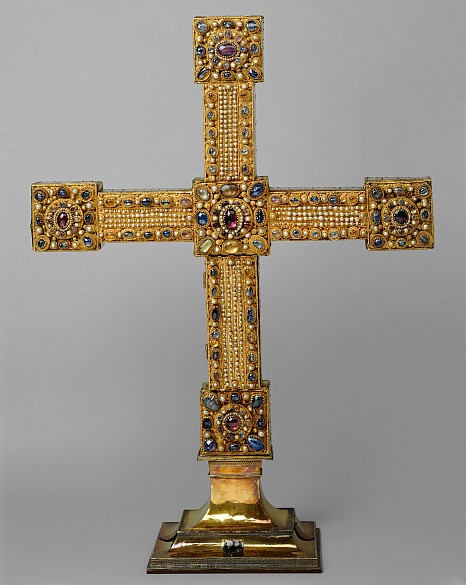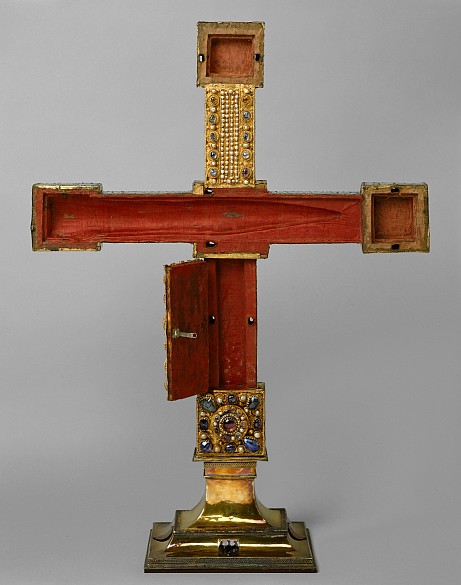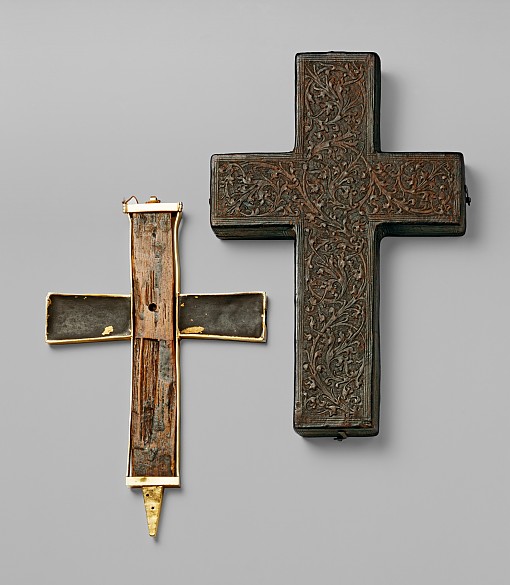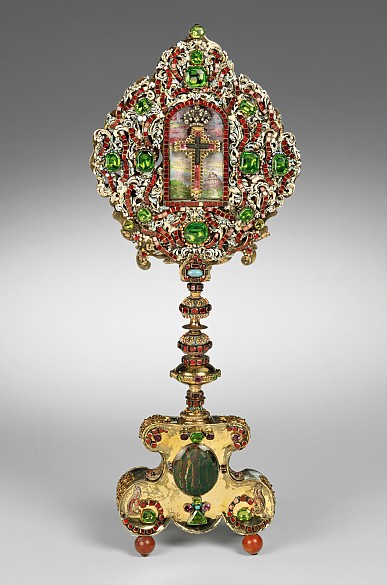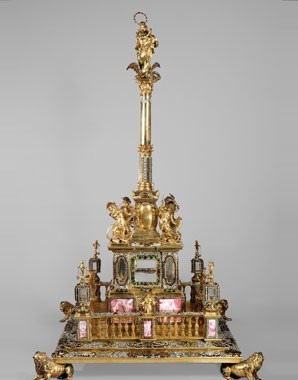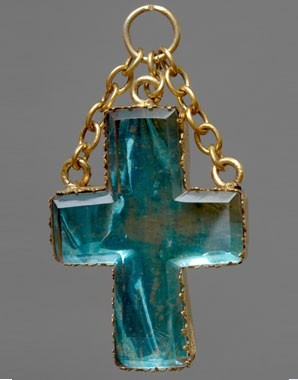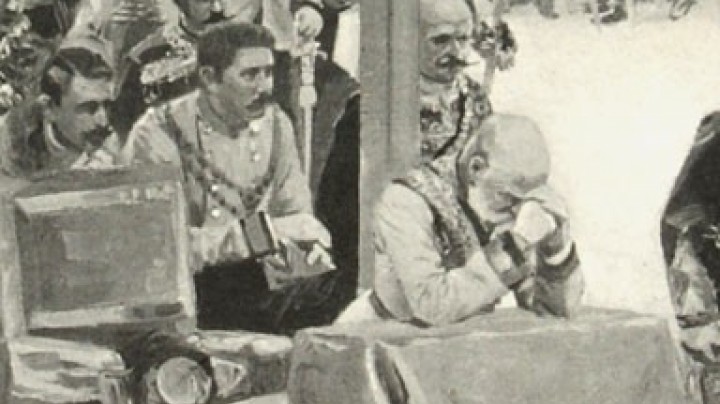Under the sign of the Cross
The cross is the central symbol of Christianity – veneration of the Cross was therefore at the heart of the ideology of dominion practised by the Habsburgs, who always saw themselves as exceptionally devout and religious monarchs.
The Habsburgs’ cult of the Cross had several sources that attest to a tradition going back to late Antiquity and early Christianity. At the Battle of the Milvian Bridge victory under the sign of the Christian cross is supposed to have been prophesied to Emperor Constantine the Great (‘in hoc signo vinces’ – ‘thou shalt be victorious under this standard!’). Thus the veneration of the Cross also played a central role in the insignia of the Holy Roman Empire, for instance in the reliquary of the Cross, said to contain a piece of the Cross of Christ, or the sacred Lance, likewise associated with the Crucifixion, which bears a nail that according to legend was used to crucify Christ.
Likewise of medieval origin is the notion of the Crusades, which the Habsburgs drew on during the time of the Turkish Wars, when the dynasty stylized itself as defender of the West against Islam.
The cross also plays an identity-defining role in Habsburg family tradition: it is said that at the coronation of the first emperor from the House of Habsburg, Rudolf I, the sceptre could not be found, so he took a simple wooden cross and stated that from now on the cross would be his sceptre.
An equally simple crucifix is supposed to have spoken to Emperor Ferdinand II when beset by a delegation of Protestant nobles who wanted to exploit the Habsburg monarch’s precarious position during the uprising of the Bohemian Estates to gain concessions in religious politics. One of the leaders is said to have grabbed the emperor in great agitation and, defying all courtly protocol, shouted ‘Nandl, give in and sign!’, forcing him to put his signature to their petition. At this, the crucifix that Ferdinand always kept with him as sign of his humility, spoke out loud and clear saying: ‘Ferdinande, non Te deseram’ (Ferdinand, I shall not desert thee). At that instant, a troop of imperial cuirassiers marched into the Hofburg and the Protestants fled. The crucifix was greatly venerated afterwards and handed to the Habsburgs in times of crisis or at the hour of death, until Maria Theresa had it placed in the tabernacle of the Court Chapel in the Vienna Hofburg as a sign of the Habsburgs’ veneration of the Cross.
Another manifestation of the Habsburg veneration of the Cross can be seen in the Order of the Star Cross. After the 1668 fire in the Hofburg, in which Dowager Empress Eleonora was saved from the flames in a last-minute rescue, a miraculously intact particle of the Holy Cross was found in the ashes. In grateful commemoration of this, Empress Eleonora founded the Order of the Star Cross as the highest mark of distinction for ladies at the Imperial Court. The name alludes to the symbol of the Order, a golden cross surrounded by four diamond stars with the inscription Salus et Gloria (salvation and glory). The Order has the objective of deepening the veneration of the Cross and supporting works of charity. Its head was the ruling empress and it still exists today in an adapted form.
